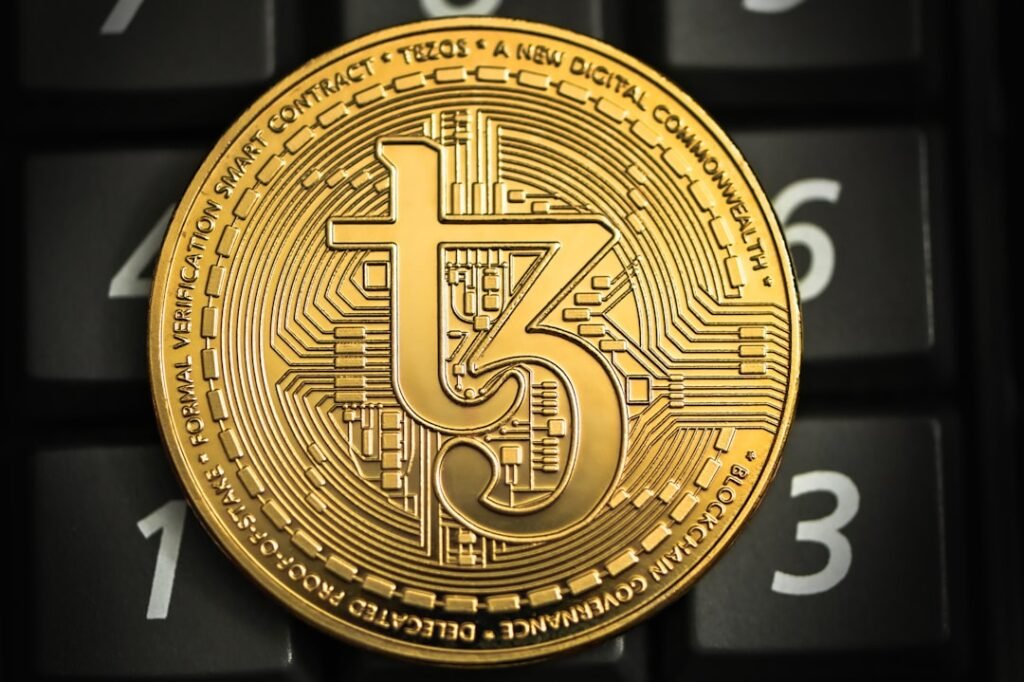The Hidden Trap of Liquidity Mining: Impermanent Loss Explained & How to Protect Your Assets
The explosive growth of Decentralized Finance (DeFi) has revolutionized investing, with liquidity mining emerging as a major attraction. By depositing assets into decentralized exchange (DEX) liquidity pools, users earn trading fees and token rewards. Yet, beneath the allure of passive income lies a pervasive and often misunderstood risk: 永久損失(IL). This isn't a minor fee; it's a fundamental force that can silently erode your capital, sometimes surpassing your earned rewards. Understanding IL isn't optional – it's essential survival knowledge for any DeFi participant.
What Exactly Is Impermanent Loss? The Core Mechanism
Impermanent Loss refers to the potential loss in value that liquidity providers (LPs) suffer when withdrawing assets from a liquidity pool due to price fluctuations, compared to simply holding those assets. Crucially, it's termed "impermanent" because もし asset prices return to their exact initial levels when you deposited, the loss vanishes. However, in the volatile crypto market, prices rarely snap back perfectly, making this loss effectively permanent for most providers.
The root cause lies in the core mechanism of Automated Market Makers (AMMs) like Uniswap, SushiSwap, and PancakeSwap. These DEXs use mathematical formulas (like the Constant Product formula X * Y = K) to set prices automatically, replacing traditional order books.
How Does Impermanent Loss Actually Happen? A Step-by-Step Example
Imagine you deposit into an ETH/USDT liquidity pool:
- Initial Deposit: ETH price is $2,500. You deposit $5,000 worth of ETH (2 ETH) and $5,000 worth of USDT (5,000 USDT). Total value: $10,000. The pool maintains a constant product (
ETH qty * USDT qty = K). - ETH Price Surge: ETH price rockets to $3,500. Arbitrageurs instantly spot the price difference between the DEX pool and other markets.
- Arbitrage & Pool Rebalancing: Arbitrageurs buy "cheap" ETH from the DEX pool (where the AMM algorithm still initially reflects the old price ratio) using USDT. They sell this ETH elsewhere for profit. This activity:
- Reduces the ETH quantity in the pool (as ETH is bought).
- Increases the USDT quantity in the pool (as USDT is paid in).
- Continues until the pool's internal ETH/USDT ratio reflects the new $3,500 market price. Suppose the pool now holds 1.4 ETH and 7,000 USDT (maintaining
1.4 * 7,000 = 9,800, close to the originalKadjusted for fees, simplified here).
- Your Share: You own a 10% share of the pool. You withdraw: 0.14 ETH and 700 USDT.
- Value Comparison:
- Withdrawn Value: (0.14 ETH * $3,500) + 700 USDT = $490 + $700 = $1,190.
- HODL Value: Had you simply held your initial 2 ETH and 5,000 USDT: (2 ETH * $3,500) + 5,000 USDT = $7,000 + $5,000 = $12,000.
- The Impermanent Loss: $1,190 (Withdrawn) vs. $12,000 (HODL) = $10,810 Loss. This gap is the impermanent loss. Even if you earned $500 in fees during this period, your net position ($1,190 + $500 = $1,690) is still drastically worse than holding ($12,000).
Why "Impermanent"? If ETH's price magically returned exactly to $2,500 when you withdraw, the pool would rebalance back, and your withdrawn assets would equal the HODL value. The loss disappears. But crypto prices are volatile and rarely retrace perfectly, making the loss effectively permanent in practice.
Key Factors Amplifying Your Impermanent Loss Risk
Several factors dictate how severe your IL exposure will be:
-
Asset Price Volatility: これは primary driver. The larger and more frequent the price swings of the assets in your pool, the higher the potential IL. Historical examples are stark:
- Bitcoin's May 2021 crash (~$58k to ~$30k, ~50% drop) caused massive IL in BTC pools.
- Ethereum's volatility around the 2022 Merge (pre-$1,600, surge >$2,000, fall to ~$1,300) created significant IL for ETH pool LPs.
- During the 2017-2018 bear market (BTC $20k -> $3k), IL rates in BTC pools hit 30%-50%.
-
Liquidity Pool Characteristics:
- Asset Correlation: Pools with highly correlated assets (e.g., stablecoin pairs like USDC/DAI) experience minimal price divergence, leading to very low IL (often <1%). Pools with uncorrelated assets (e.g., ETH vs. a niche altcoin) face high IL risk (potentially 30-50%+) due to independent, often drastic, price movements.
- Pool Ratio: Pools not using a 50:50 ratio (e.g., Balancer's customizable weights) experience IL differently. An 80:20 pool will see IL impact the dominant asset more heavily during its price swings.
- Pool Depth: Deeper pools (e.g., Curve's stablecoin pools) absorb trades better, minimizing price impact within the pool and thus reducing IL severity compared to shallow pools.
-
Time in the Pool: IL risk accumulates over time. The longer you provide liquidity, the higher the probability of experiencing significant price fluctuations. Short-term exposure might see minimal IL, but long-term providers risk compounding losses through multiple price swings. Many LPs in the 2020-2021 DeFi boom saw rewards eroded by accumulating IL over time.
Impermanent Loss vs. Traditional Finance: A Unique DeFi Risk
IL is fundamentally different from traditional financial risks:
- Market Risk (Traditional): Loss from overall market decline (e.g., stock bear market). Affects holders equally.
- Liquidity Risk (Traditional): Inability to sell an asset quickly/cheaply.
- Impermanent Loss (DeFi): A relative loss specifically caused by the AMM's automated rebalancing mechanism during price changes, compared to holding. It's an opportunity cost inherent to the liquidity provision model, not just market movement.
Traditional market makers manage inventory risk actively. DeFi LPs are passive participants constrained by the AMM's algorithm, making IL a unique structural challenge.
Calculating Your Impermanent Loss: Tools & Strategies
While the formula IL = 2 * sqrt(price_ratio) / (1 + price_ratio) - 1 exists (where price_ratio is current price / deposit price), online calculators like DailyDefi.org's IL calculator are practical tools. Input your initial prices, deposit amounts, and current prices to get instant IL estimates.
Use these tools for:
- Pre-Investment Screening: Estimate potential IL under different volatility scenarios for a target pool. Compare projected IL against expected fee + reward income. If IL likely exceeds earnings, avoid the pool.
- Portfolio Monitoring: Periodically check your active LP positions to assess how price changes impact your IL. Significant, persistent IL might signal an exit.
- Pool Selection: Compare IL risk profiles between similar pools (e.g., ETH/USDC vs. ETH/DAI) to choose the one with lower inherent IL risk.
Mitigating Impermanent Loss: Practical Strategies for LPs
While IL cannot be entirely eliminated, savvy LPs use strategies to reduce exposure:
-
Choose Low-Volatility Pairs: Prioritize stablecoin pairs (USDC/USDT, DAI/USDC). Their minimal price divergence keeps IL extremely low (<1%), even during market turmoil. Avoid highly volatile pairs (ETH/altcoin) unless rewards are exceptionally high and justify the risk.
-
Dynamic Liquidity Management:
- Reduce Exposure in High Volatility: During periods of extreme market swings (e.g., major news, crashes, pumps), withdraw or significantly reduce liquidity to avoid the worst IL.
- Increase Exposure in Stability: Add liquidity during calmer market phases or sideways trends (consolidation), where price changes are minimal, maximizing fee capture with lower IL risk.
- Time Strategically: Use technical analysis or market sentiment to gauge potential volatility and time your liquidity provision accordingly. Avoid providing liquidity just before major anticipated events.
-
Utilize Hedging Tools:
- Futures: Open an opposite position in the futures market. If providing ETH/USDT, short ETH futures. If ETH price drops, losses in the LP are offset by gains on the short futures position (and vice versa). Risk: Leverage magnifies losses if the hedge is wrong.
- Options: Buy put options for the volatile asset (e.g., ETH put options when providing ETH/USDT). If ETH price crashes, the increased value of the put option compensates for IL. Risk: Options premiums cost money and decay over time; precise market prediction needed.
The Current State & Evolving Solutions to Impermanent Loss
IL remains a significant hurdle for DEX liquidity:
- Widespread Impact: On major DEXs like Uniswap (e.g., ETH/USDT pool), LPs experienced average IL of 5-10% over the past year, spiking above 20% during extreme volatility. Niche asset pools often see 30-50%+ IL.
- Innovations Addressing IL: New AMM models aim to reduce or redistribute IL:
- CoW AMM: Uses off-chain batch auctions and Solvers (third-party rebalancers) who compete to rebalance pools in the LP's favor. Captures arbitrage value internally as "Surplus" paid to LPs instead of MEV bots, aiming to eliminate Loss-Versus-Rebalancing (LVR), a core component of IL.
- Bunni V2 (Leveraging Uniswap V4): Focuses on boosting LP profitability via concentrated liquidity (Uniswap V3) and improved tokenomics (veToken model like Curve). Aims to consolidate liquidity, reduce slippage, and incentivize long-term provision, making fees more competitive against IL.
The Imperative for Liquidity Providers
Impermanent loss is not a theoretical concept; it's a quantifiable financial risk inherent to DeFi liquidity mining. It stems directly from the automated rebalancing mechanisms of AMMs during price volatility. Ignoring IL is like sailing into a storm without checking the forecast.
Successful liquidity mining requires more than chasing high APYs. It demands:
- Understanding the Mechanism: Grasp how AMMs and price changes trigger IL.
- Rigorous Risk Assessment: Use calculators, analyze historical volatility of pool assets, and correlate this with expected fee/reward income. Favor stable, correlated pairs.
- Active Management: Don't "set and forget." Monitor markets, adjust liquidity levels based on volatility, and consider hedging if appropriate and understood.
- Staying Informed: Track innovations like CoW AMM and Bunni V2 that aim to reshape the LP experience and mitigate IL.
By acknowledging impermanent loss and strategically managing it, you transform from a passive yield seeker into an informed DeFi participant, significantly improving your chances of turning liquidity provision into sustainable profit rather than unexpected erosion of your capital. The rewards of DeFi are real, but so are the risks – and impermanent loss is arguably the most pervasive one you must master.










